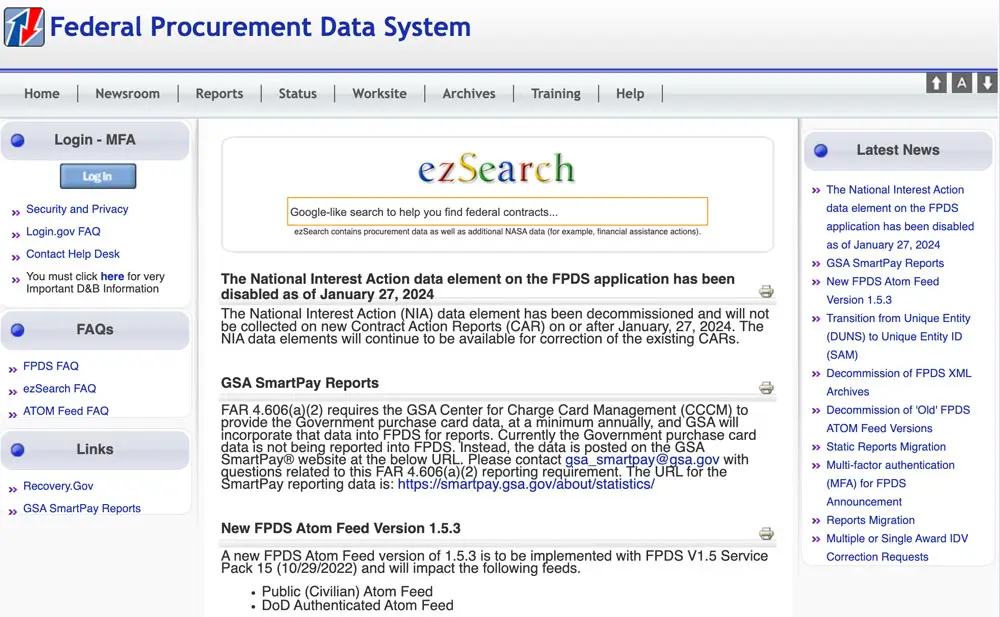
How to Navigate FPDS.gov
April 16 @ 1:00 pm - 2:00 pm

Many community members asked what steps they should take next. We recommend that after obtaining your UEI, CAGE, and registering your business entity on SAM.gov, your next steps should include:
1. Complete Your SAM Profile:
Ensure your SAM.gov profile is fully completed with accurate NAICS codes, Product and Service Code (PSC), and accurate business information. This will help you get noticed by contracting officers when they are doing their research.
2. Get Familiar with Government Contracting:
Understand the different types of government contracts and familiarize yourself with the Federal Acquisition Regulation (FAR). Go to our course Understanding of Government Contracts and watch the Types of Government Contracts/Agreements lesson for more information.
3. Explore Set-Aside Programs:
If applicable, apply for set-aside programs like the SBA 8(a) Business Development Program, HUBZone, or Women-Owned Small Business (WOSB) certification. A community member asked a question about applying for other Minority-Owned Business Certification. Yes, you should apply and this certification is often referred to as the Minority Business Enterprise (MBE) certification. The National Minority Supplier Development Council (NMSDC) provides one of the most recognized MBE certifications, which is widely accepted by corporate America and many government entities. State and Local Governments offer their own MBE certification programs to promote minority participation in public contracts.
4. Search for Opportunities:
Use SAM.gov to search for contract opportunities that match your business capabilities. SAM.gov is the primary portal where businesses register to do business with the federal government and search for active contract opportunities. You can do market research on FPDS.gov since it is a comprehensive database that tracks all federal contract actions and procurement data. It is primarily used for market research and analysis.
5. Build Relationships:
Network with government agencies and prime contractors through industry days, conferences, and matchmaking events. Go out there when you can, shake hands, give out your business card and capability statement brochure. They also do events virtually.
6. Respond to Sources Sought and RFIs:
Responding to these notices can increase your visibility and help you understand agency needs. Sources sought is when they are doing market research to see what vendors are out there that can fulfill their requirements. Remember that SS/RFI can turn into an invitation for/to bid if you seem like a good candidate.
7. Prepare Your Capability Statement:
Many of you believe this should be the second or third step. In reality this can be the very first step. However, for you to create a clear and concise capability statement to market your business entity to government buyers you need to understand how other vendors are doing business with the government and be a stalker. Write your capability statement the same way other bid-winners have theirs. If Tim won several government contracts, I want to mirror Tim’s documentation as well and be like him.
8. Start Bidding:
Finally, let’s begin by bidding on smaller contracts or subcontracting opportunities to gain experience. This will help you build a solid foundation, it reduces risk, and positions your business entity for success in the larger federal contracting market. You will also have a few past performance information documented on CPARS or Contractor Performance Assessment Reporting System, a system used by federal agencies to assess and document the performance of contractors on government contracts.

